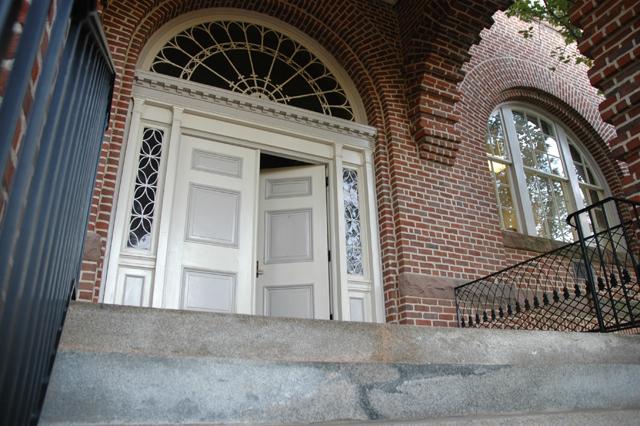Holladay Hall is one of the places on campus with a haunting story. It was believed to be built on top of a graveyard and an 1889 fire was thought to be caused by the spirits from the graveyard. Students have been exposed to such stories about other places on campus, but whether these stories are accepted are up to the individual.
E. Clifton Williams, Office of General Counsel and University Records officer, said he doesn’t believe the building is haunted, but the paintings have seemed to change.
“There has been no mysterious activity. But, from time to time, I have had to enter the building late at night, and thought the eyes of the large paintings on the main floor seem to have changed their point of focus. But, it was probably just the difference in lighting from day to night.”
Greer Dillard, a junior in social work, said the building is spooky at night.
“The building seems spooky only at night when it’s less populated on campus.”
Thomas Stafford, director of Student Affairs, said he does not think Holladay Hall is haunted, but other factors make it spooky.
“I guess it depends on who you talk to because I don’t consider it to be haunted. I hear stories about people seeing ghost or it being built on top of a graveyard”, Stafford said. “However, up until 15 years ago the top floor of the building was used as storage. It had wooden, squeaky floors, it was dusty and a little spooky, but I never saw or heard everything. But now, it has been remodeled and it looks very nice.”
Each year, the New Student Orientation introduces haunting tales of Holladay Hall through the evening portion of its N.C. State History Tour, according to Gabe Wical, director of New Student Orientation.
“The primary purpose of the tour is to provide incoming students with a different angle on N.C. State’s campus apart from just geography, landmarks, where classes are located, etc. Since Holladay Hall was the first building and has at least one interesting story associated with it, we include it as part of our tour.”
Stafford said the stories about Holladay Hall enhance campus life for those interested in those kinds of stories.
“It depends on your point of view whether these stories enhance student life. For the people that think it’s important to have stories like that, it probably does enhance campus life overall. Anyone can make up a story; that’s probably how these stories got made. Someone makes up a story and it gets passed down.”
Shykelia Owens, a sophomore in social work, said the stories are custom to the University.
“I think it’s part of tradition, like a legend.”
Wical said the campus history tour is not intended to be scary, but rather to interest students with myths and educate them about the campus.
“The intention of the tour is to provide a combination of interesting facts and myths. I think most students find the tour interesting, even if they don’t find it scary or spooky. If students anticipate a tour that is actually going to be actually scary, then they are probably disappointed,” Wical said.
Increasing interaction between new students is another reason for the story telling, Wical said.
“We try to keep the tour informative and fun and one more opportunity for students to meet other students and learn more about the campus.”
Owens said the tour consists of these stories as a way to alarm students.
“I think the stories are part of a hoax that they are saying to scare us.”
The stories about Holladay Hall could be traced back to the early days of the University when students lived in the building, according to Stafford.
“Holladay hall is the oldest building of campus. In the early years, students lived on [the] top two floors. The first floor was where the offices and classes were, and the gym and infirmary were on lower level. People could have told stories the first years, especially when the student lived here. My office has been in this building for 27 years and I haven’t heard anything that consists with it being haunted.”
Dillard said these stories are important to the University.
“The myths give a sense of living history.”
According to Williams, there are interesting carvings from former residents of the building from its earlier years.
“I don’t think it is haunted. However, as a lover of history, it really is interesting to see the names [and] initials of former students etched into the window sills of third floor,” Williams said. “It’s sort of like a message from a by-gone age.”








